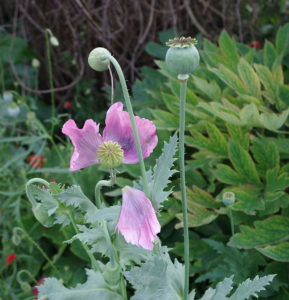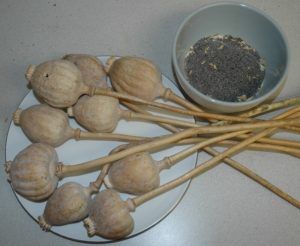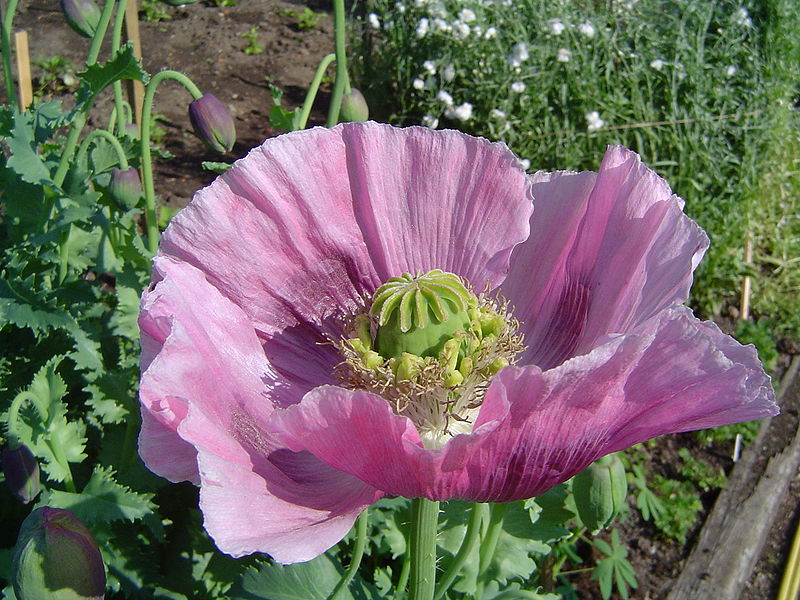If you want to grow poppies for the seeds to bake with, make sure you plant opium poppies (Papaver somniferum). Other types of poppies such as California poppies (Eschscholzia californica), a native poppy, Corn Poppies (Papaver rhoeas), a symbol of Veteran’s Day, or Oriental Poppies (Papaver orientale), a perennial ornamental poppy, do not produce edible seeds.
Poppies are native to the eastern Mediterranean region. The seeds and the latex produced by the pods have been in use since before recorded history in Europe and Asia. Poppies were introduced to North America by European colonists.
Many countries place restrictions on growing opium poppies. In the United States, it is legal to grow them and harvest the seeds but illegal to harvest the latex and manufacture opium products from it.
The seeds contain minute amounts of the alkaloids containing codeine and morphine. The levels are too low for any effects to be felt if you eat them but they will register on drug tests so refrain from eating them for a week before being tested for drugs for employment or other purposes.

Hungarian Breadseed Poppies
Opium poppies require full sun and well-drained soil. They grow up to 3 feet tall. The plants have very distinctive gray stems and leaves. The flowers come in various colors such as lavender, mauve, pink or white. Each blossom has four large petals. Bloom time is June through August. After the petals fall, the seed pods appear and swell eventually reaching a size from that of an egg to as large as golf ball size.
A popular opium poppy cultivar grown for its seed is the Hungarian Breadseed poppy. The flowers are a light purple or white. The seed pods are larger and produce more seeds than other opium poppies.
Growing breadseed poppies from seed is easy. You just sprinkle the seeds on top of the soil. They need light to germinate so you don’t need to cover them. The secret to good germination is cold. The seeds need a period of cold outdoors or you can cold stratify them in your refrigerator for up to a week.
Personally, I like to sow the seeds in my garden in February when I am sick of winter and itching to get out into the garden. Just being able to plant seeds helps. It’s not a problem if there is snow on the ground. I sprinkle the seeds on the snow knowing that when the snow melts and the seeds come in contact with the soil, they will germinate at the correct time.
If you are planting your seeds in your garden in early spring, you can expect germination within 1 to 2 weeks. Once the seedlings are an inch tall, thin them to 6 inches apart.

Dried Pods and Seeds
Once the plants have bloomed and the pods have formed, be prepared to stake the stems to prevent them from falling over from the weight of the pods. The seed pods should not touch the ground where they could rot or the seeds become discolored.
The pods are ready for harvest when they have turned a silver gray. Small vents will appear at the tops where the seed can be broadcasted into the garden. Cut the stems with your garden shears and take them indoors to finish drying. When you hear the seeds rattling around inside, the pods are full dried and the seeds can be removed.
Allow the seeds to dry for a day before storing them in a tightly sealed glass jar.

